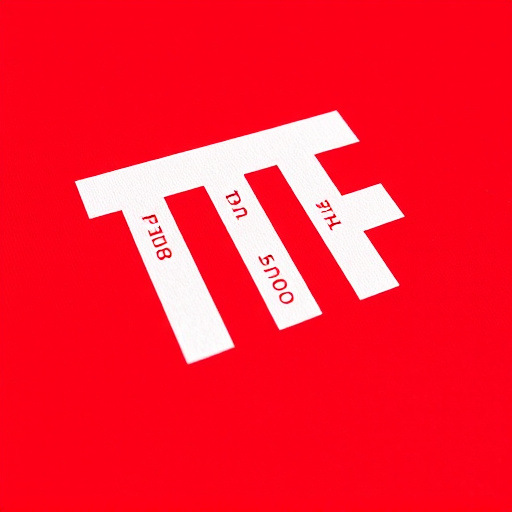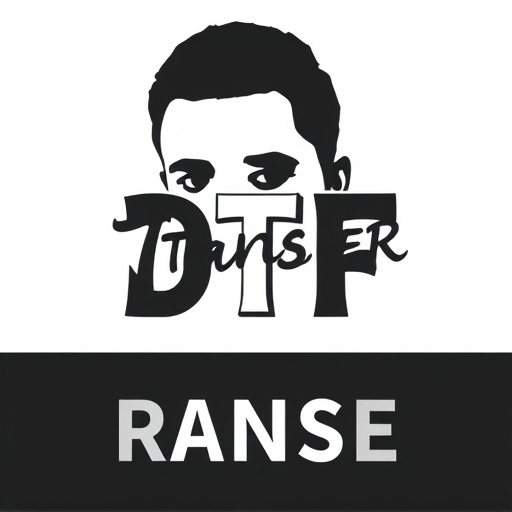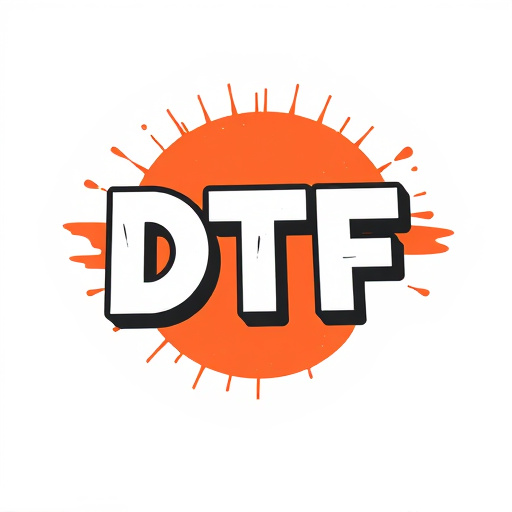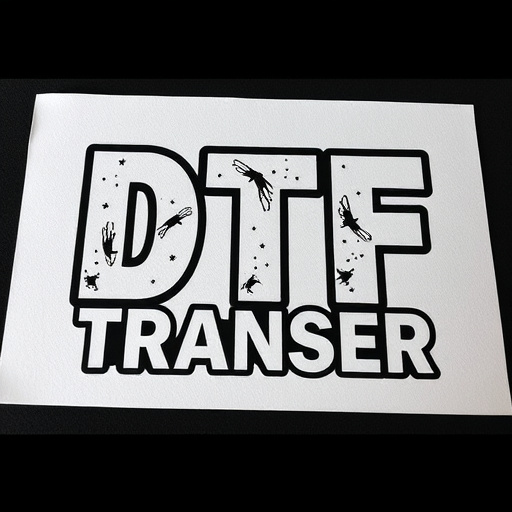This text explores Direct to Fabric (DTF) transfer printing, a modern textile design technique. DTF uses a specialized film to apply ink directly to fabric, offering vibrant, durable prints with precise color accuracy. The process involves digital design preparation, conversion for printing, and heat treatment to set the design into fabric fibers. Pre-arranged designs streamline the process, enhancing efficiency and ensuring consistent quality. Specific design considerations, such as file formats, color profiles, and resolution, are crucial. A five-step submission process includes design review and feedback from reputable DTF printing services. Meticulous quality assurance checks prevent mistakes. Post-print considerations like ink curing, fabric type, and care instructions ensure long-lasting DTF prints.
“Unleash your creativity with Digital Thermal Transfer (DTF) printing! This innovative process allows designers and businesses to submit pre-arranged designs for precise and high-quality prints. In this comprehensive guide, we explore the benefits of offering pre-designed DTF options, from enhancing efficiency to ensuring accuracy. Learn how to optimize your design for transfer, navigate the submission process, and perform quality checks. Discover the post-print considerations for flawless DTF prints that will leave a lasting impression.”
- Understanding DTF Transfer and Printing Process
- Benefits of Submitting Pre-Arranged Designs
- Preparing Your Design for Optimal DTF Transfer
- The Submission Process: Step-by-Step Guide
- Quality Assurance Checks Before Printing
- Post-Print Considerations for DTF Prints
Understanding DTF Transfer and Printing Process

Understanding DTF Transfer and Printing Process
DTF (Direct to Fiber) transfer printing is a cutting-edge technique that allows for precise and vibrant prints on various materials, especially textiles. This innovative method involves transferring ink directly onto the fabric’s surface, resulting in rich colors and intricate designs. The process begins with preparing the design digitally, ensuring it meets specific requirements for DTF printing. These designs can be submitted pre-arranged, offering a convenient option for creators and businesses.
Once the pre-arranged design is received, it undergoes a series of steps. First, the digital image is converted into a format suitable for printing. Then, the design is precisely applied to a transfer film using specialized equipment. This film acts as an intermediary, allowing for accurate color reproduction and detailed patterns when pressed against the fabric. The printed fabric is then cured through heat treatment, locking the design permanently into the fibers of the material. This process ensures that DTF prints are durable, vibrant, and capable of withstanding various washes and wear.
Benefits of Submitting Pre-Arranged Designs

Submitting pre-arranged designs for DTF (Direct to Film) printing offers a range of advantages for creators and businesses. One of the key benefits is efficiency; by having your design ready, the printing process becomes streamlined, allowing for faster turnaround times. This is particularly useful for those with tight deadlines or for custom orders where quick production is essential.
Additionally, pre-arranged designs ensure consistency in quality. With a set design, printers can reproduce the exact artwork, ensuring each print maintains the intended visual standard. This precision is especially valuable for brand consistency and creating professional DTF prints that meet high-quality standards.
Preparing Your Design for Optimal DTF Transfer

Preparing your design for a DTF (Direct to Fabric) transfer is an essential step in ensuring high-quality prints on various materials. The process involves optimizing your artwork for seamless integration with the printing technology, resulting in vibrant and durable DTF prints. Firstly, ensure your design is in a compatible file format, typically vector formats like SVG or EPS, as these preserve intricate details without pixelation. Secondly, check color profiles; using CMYK colors guarantees accurate representation during the printing process, aligning with DTF transfer requirements.
Additionally, consider resolution and image quality. A high-resolution design (300 DPI or above) allows for crisp details, making it ideal for complex artwork. Simple designs may require a lower resolution, but maintaining a minimum of 150 DPI is recommended. Eliminate any unnecessary elements or transparent backgrounds to streamline the printing process and avoid potential issues during the DTF transfer, ensuring your final prints look as intended.
The Submission Process: Step-by-Step Guide

Submitting pre-arranged designs for DTF (Direct to Film) printing is a straightforward process that allows creators and designers to ensure their vision is accurately transferred onto the final prints. Here’s a step-by-step guide on how to do it effectively:
1. Prepare Your Design: Start by ensuring your design is in a suitable format, typically a high-resolution vector file (AI, EPS) or raster image (PNG, JPEG). Check that all elements are crisp and clear, with no pixelation or distortion. This will guarantee accurate reproduction during the DTF transfer process.
2. Choose a DTF Printing Service: Select a reputable DTF printing service provider that offers pre-submission design review. Reputable services often have an online platform where you can upload your designs and receive feedback before finalization. Ensure they cater to your specific needs in terms of print quality, material options, and turnaround time.
3. Upload Your Design: Navigate to the service’s submission portal and create an account if required. Upload your design file, ensuring it adheres to the platform’s size and format requirements. Some services may offer templates or guidelines to help you optimize your design for DTF printing.
4. Provide Print Specifications: After uploading, specify the desired print details, such as size, orientation, material type (e.g., vinyl, polyester), and any special effects or finishes. These options will impact both the final DTF prints‘ quality and cost.
5. Review and Finalize: The printing service will review your design to ensure it’s print-ready. They may provide feedback or ask for adjustments, especially if elements are too complex or not optimized for DTF transfer. Address any issues promptly, make necessary changes, then resubmit for final approval. Once approved, your design will be prepared for production.
Quality Assurance Checks Before Printing

Before submitting your designs for DTF (Direct to Fabric) printing, it’s crucial to conduct thorough quality assurance checks. This step is essential to ensure that your prints will turn out crisp and vibrant on the final fabric. Start by verifying the resolution of your design files; high-resolution images with sharp details are key to achieving fine lines and intricate patterns in your DTF transfers. Check for any potential printing issues like clipping paths, transparency, or color mode mismatches that could affect the final output.
Additionally, examine your design for any flaws or inconsistencies. Ensure that all elements are properly aligned and that there are no visible artifacts or errors. Validating the color accuracy of your DTF prints is also vital; use a color profile checker to ensure your designs translate accurately across different printing systems. These quality assurance measures will help prevent costly mistakes and ensure that your DTF prints meet the highest standards, resulting in stunning, professional-grade fabric designs.
Post-Print Considerations for DTF Prints

After a successful DTF (Direct to Fabric) printing process, there are several post-print considerations that can significantly impact the final product’s quality and durability. One crucial step is allowing the ink to cure properly. This ensures the colors remain vibrant and prevents smudging or fading during handling or washing. Many DTF prints require a heat treatment or a specific curing time to set the ink, which should be followed precisely for optimal results.
Additionally, the selection of suitable fabric and care instructions are essential. Different fabrics have varying properties that can affect the print’s appearance and longevity. Users should consider the fabric type, weight, and stretch when designing their DTF transfer patterns to ensure a crisp and accurate print. Proper care guidelines, such as washing instructions and recommended fabric maintenance, should be communicated to ensure the printed designs remain intact over time.














